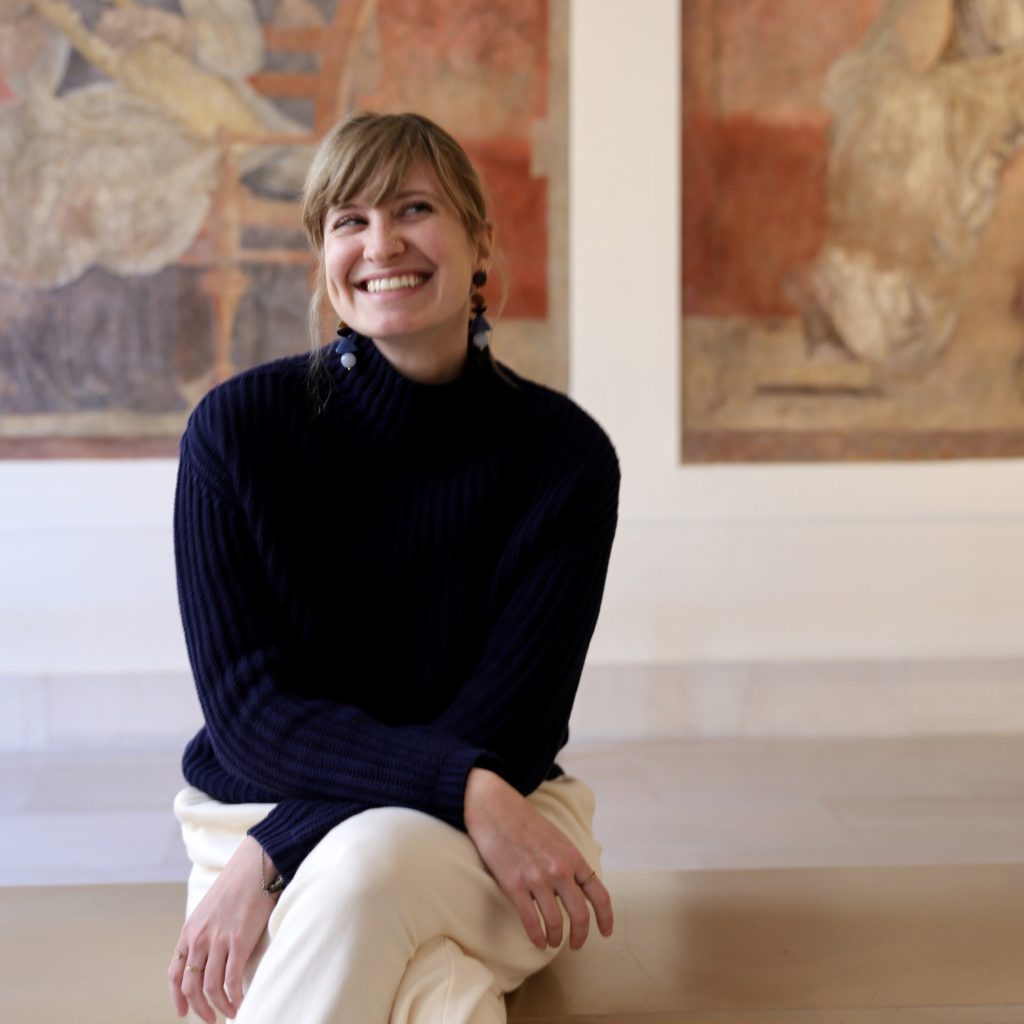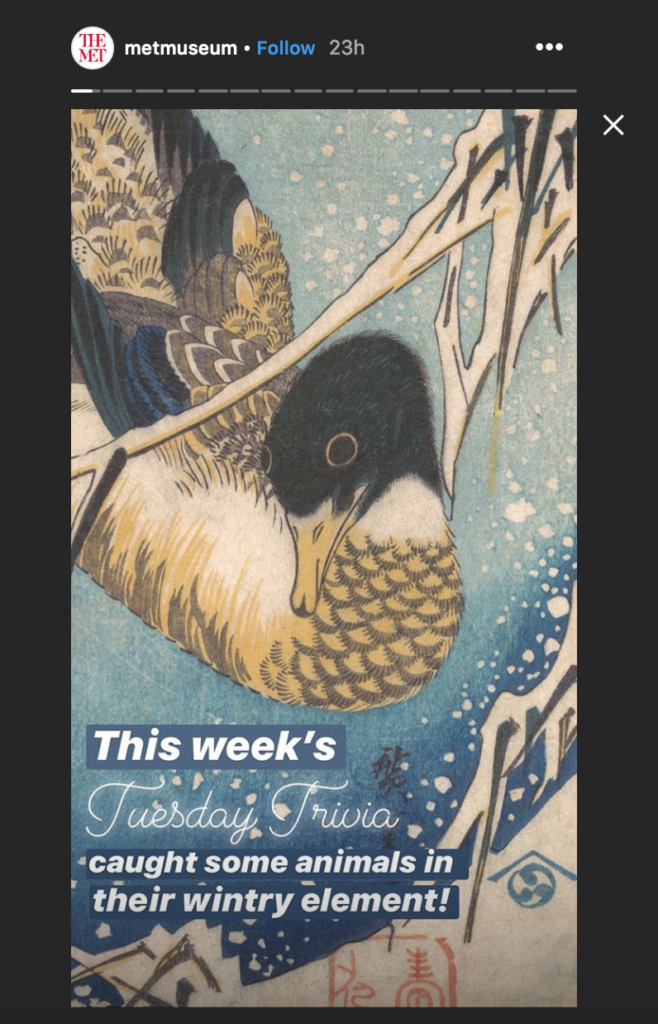People
Meet the Woman Who Beat Out Hundreds of Applicants to Manage the Metropolitan Museum of Art’s Commanding Social Media Presence
Claire L. Lanier joined the museum from the New-York Historical Society.

Claire L. Lanier joined the museum from the New-York Historical Society.

Sarah Cascone

What does it take to get a gig as the social media manager for New York’s Metropolitan Museum of Art? Well, at least seven interviews over the course of a month, says Claire L. Lanier, who was named to the post last March.
It’s a role, she admits, that she never expected to get. When Lanier, who was working as the social media and content manger at the New-York Historical Society, saw the job listing online, she hesitated to apply.
“It just seemed like an intimidating job,” she told Artnet News. (Previous occupants of the position include Kimberly Drew, a curator and social-media star in her own right.) But about a month later, still trying to convince herself it was worth applying, Lanier got a call from the museum’s vice president for external affairs, Kenneth Weine. Someone had recommended her for the position, and was she interested?
“My first interview was on my birthday, which was coincidental and fun,” Lanier recalled.
During the interview process, she met with members of numerous departments. “I’ve never had that many interviews for the position, but I wasn’t surprised,” Lanier said. “It’s a significant responsibility to speak on behalf of the Met on social media.”
But the reality of it all didn’t really sink in until she was invited to meet with Met president Daniel H. Weiss and director Max Hollein. “At that point, I thought, this might be real,” she said.
We spoke with the social media guru about how she landed one of the most prestigious gigs in the New York art world, what it takes to do her job, and how the Met’s embrace of social media is serving its mission.
At the New-York Historical Society, you oversaw the social media campaign for the museum’s blockbuster Harry Potter exhibition. What was that like?
That was a major moment at the museum—probably the biggest social campaign that I’ve worked on—and, as a Harry Potter fan, it was really exciting. We started teasing the exhibition far, far sooner than usual because we knew it would be crucial for tourists and travelers.
Our strategy was to showcase the works—really, that show was about putting the Harry Potter world into the real world’s historical context and understanding the basis for these magical things. A bezoar stone is actually a real thing—J.K. Rowling didn’t make that up.
What does your current job entail? Are there goals in terms of growing the museum’s online following?
I manage the Facebook, Instagram, Twitter, and Pinterest platforms for the Met. I hired a social media producer, Victoria Martinez, in the fall, so there’s two of us on the team now. We post every day, up to five times a day, depending on the channel.
Much of our time is spent researching and crafting content, but that could look different depending on the day or week. It may include being in the galleries to shoot photos or video, building and designing interactive Instagram stories, attending a program to cover live, or collaborating with other departments on content development.
We’re not super quantitatively focused. We really gauge our success on how we’re engaging our audience and educating the public.

The Metropolitan Museum of Art does a Tuesday Trivia Instagram Story series. Screenshot via Instagram.
How do you manage content across the different social media channels?
We often post almost the exact same content on all of our platforms, especially when we’re talking about special exhibitions, but we do notice differences. Naturally, the platforms have different priorities, with Instagram being so image-driven and Facebook being a place where we can share links to blog posts or digital features.
Demographically, Facebook has grown with older generations really dramatically in the past few years. With our “Play It Loud” exhibition, we found that a lot of Baby Boomers on Facebook were really responding strongly, remembering when they had gone to a Zeppelin concert or different things like that. So we did a Facebook live tour through the exhibition, which a lot of people enjoyed.
How did you start working in social media, and how have you seen that field expand since?
I think one of my biggest qualifications when I first started—and I suspect this is true of a lot of social media managers—was just that I was a young person and more well-versed in the digital sphere.
I was working in a role that was part administration, part communications, and I took on some of the social media elements. I have a knack for taking a vast amount of information and distilling it to a small amount of information, which is the backbone of a lot of social media writing. I sort of fell into it.
When I graduated from college in 2008, I never could have imagined that this was what I would be doing. Social media has gone from being a very personal space—I remember communicating with my roommate, who was in my room, via Facebook—to almost being like a public square where major conversations are happening.
What was the biggest challenge moving to a large, encyclopedic institution like the Met?
I come from an American history background. History and art history are very similar, but I had to do my homework. I had to make sure that I fully really understood the Met to make sure I was representing it well. And the Met is so big in every way. It’s physically large, the collection is massive, there are so many staff members. Thinking about the daily experience of how people interact with us, that’s probably the biggest challenge.
Social media comes down to voice, and how you’re talking about what you’re talking about. It’s always been my mission to make history, art history—whatever the scholarly topic at hand—engaging for someone who maybe is not so interested. My goal is to bring the voice down from the ivory tower and offer context that’s relatable. It’s also about being playful and doing fun campaigns like Caturday.
How do you balance the demands of different departments that want their projects highlighted on social media?
It’s actually been easier than I thought! The staff of the Met are really great and very attuned to social media and respectful of our strategy. I want to be as supportive of my colleagues as possible and showcase their work in as captivating a way as we can.
One of our strategies is that we have 27 departmental Instagram accounts. It’s an incredible opportunity for departments to share more intimate, niche things. I have broad oversight over those accounts, but day-to-day, they are managed by people in those departments.
Working in social media, how do you approach your own online presence? Are you also trying to build up your personal following?
I do have my own social media, but how do I say this… it’s like hot garbage. It’s not fancy. I don’t use my social media as an avenue for my career or my personal brand. I just think about it as a way to connect with my friends. Because I work in it, I treat my own platforms very personally.